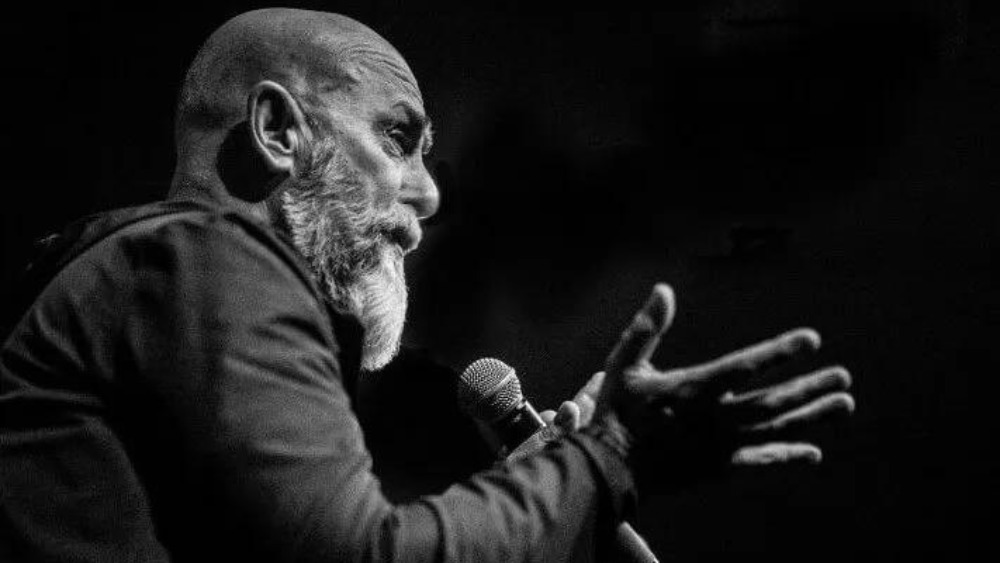A friend recently told me that she likes to watch the same movies over and over.
I can’t help thinking that would ruin the drama. But, as my friend expressed, there’s a certain comfort in knowing the ending. It helps us experience the drama with hope.
One of the profound comforts of following Jesus is that we know the end of everything: the new heavens and the new earth; the wiping away of every tear; the end of sin; the death of death; the joy of eternal life with God.
But there is, frustratingly, a lot we don’t know in the meantime. Living in the “now but not yet”, we await the consummation of God’s kingdom, with a collective mission to “alert everyone everywhere to the fact that our God reigns in Christ.”
From past to future
That characterisation of mission comes from leading Australian missiologist Mike Frost, the founding director of the Tinsley Institute, a mission study centre at Morling College, where Frost has lectured for 25 years. Having come to Christ in university through the evangelism of friends, Frost says evangelism is in his “spiritual DNA”. But in his most recent book, Mission is the Shape of Water, Frost seeks to break our (often narrow-minded) mould of mission by examining the history of the global church to foster a “healthy Christian memory”.

Mike Frost, author of Mission is the Shape of Water
Citing countless examples over thousands of years, Frost demonstrates that mission, while unchanging in its content, must be fluid in its shape, declaring the reign of God within a particular context. The story of Alice Seeley Harris is a particularly poignant example.
The book finishes with an epilogue called “Where Will the Water Flow”, in which Frost examines the trajectory of the global church.
He is insistent, both in the book and in our conversation, that he is “not setting [himself] up as an expert on the future”, suggesting scepticism towards anyone who does. Acknowledging that this is all conjecture, Frost sees clear enough trends in the past and present to track potential trajectories into the future. Of the eight predictions made in the book’s epilogue, he tells Eternity about three in particular.
“The typical Christian today, globally, is a poor, young, uneducated woman in sub-Saharan Africa.” – Gina Zurlo
The future of the church will not be white
An immense shift in the geographical location of the global church is already taking place. For example, the largest Anglican community in the world by population is in Nigeria, with “more Anglicans in church on Sunday morning in Nigeria than in all the British Isles and North America combined.” [2]
Yet, Frost notes, British and American Anglicans tend to occupy key leadership positions. “That’s just unsustainable, and that’s ebbing away slowly,” he observes. “It’s just very uncool.”
“It’s not simply enough that ‘we pay the bills, so you should listen to us.'”
As well as speaking of East and West, Frost says Christianity has dropped from the North to the South (with Australia included among the ‘Northern’ cultures). In addition to the enormous movements in sub-Saharan African, about half a billion Christians live in South America. In the memorable words of Gina Zurlo, an American researcher into global Christianity, “The typical Christian today, globally, is a poor, young, uneducated woman in sub-Saharan Africa.” According to her research, two-thirds of the global church live in Asia, Africa, Latin America and Oceania (up from 18 per cent in 1900).
“The South,” Frost summarises, “is where the balance of Christians are. We haven’t yet come to the point where we are willing to completely acknowledge that.”
“There’s something so incredibly arrogant and inappropriate with that kind of thinking.” – Mike Frost
Frost notes that Christians in regions with money, history and structures in place still typically extend philanthropic concern from North to South. But, he protests, “It’s not simply enough that ‘we pay the bills, so you should listen to us.’ There’s a sense now in which we have to acknowledge that Christianity is a Southern religious movement, and we’re going to be led, not be the leaders.”
‘A mile wide and an inch deep’
Frost rejects criticism from some of the “old guard” that, for example, African Christianity is “a mile wide and an inch deep” (vast but shallow). “There’s something so incredibly arrogant and inappropriate with that kind of thinking,” he cautions. “As though Christians in the West have some great depth; as though we’re not shaped by our own (in our case secular Western) culture as much as they may be shaped by certain African cultures.”
In fact, Frost predicts that the more intellectual and academic form of faith, represented particularly by Sydney evangelicals, will become a minority expression within world Christianity.
“It was a leaderless revival. No one was in charge and no one took charge.” – Mike Frost
The future of the church will be declericalised
Somewhat similarly, Frost sees signs that the global church is headed away from reliance on credentialed officeholders and towards other sources of authority who are deemed more trustworthy. Numbers of candidates for ordained leadership are down across the board. In general, there is a movement away from “the expertise of old, white, grey-bearded men with degrees and power and salaries” and towards “those who appear to have no vested interest”.
Many of the most influential movements around the world, such as #metoo, climate change, women’s rights in the Middle East and Black Lives Matter, have gained steam with non-traditional leadership models. Frost also cites the recent Asbury revival as “a beautiful example”, saying, “It was a leaderless revival. No one was in charge and no one took charge.”
Although there may naturally be apprehension about this development (as in the case of acknowledging the church’s Southward move), Frost suggests that our energy is better spent helping to direct it along the right lines. [3] If the world is moving towards “unqualified” visionaries as leaders of major initiatives, perhaps that is another way that our mission will take the shape of its container.
What will the future of church life and education look like?
The future of the church will be hybrid and interconnected
As a keen student of history, Frost thinks we often overuse the phrase “unprecedented times”. But, he continues, the emergence of the “digital world” is genuinely peculiar to our time.
What does it mean for us to fashion a sense of faith and community in a hybrid environment? What will the future of church life and education look like? “They’re very significant challenges that the church has never had to figure out before in this particular way.”
For better or worse, Frost writes, “The age of ‘hybridity’ has arrived”. It is up to us to pursue depth, community and connection as we seek to alert everyone everywhere to the reign of God in Christ in the digital age.
——
[1] Romans 8:15 and Romans 8:23; Ephesians 1:7 and Ephesians 4:30; 1 Corinthians 1:2 and 1 Thessalonians 5:23-24; Ephesians 2:8 and Romans 5:9; Ephesians 2:6 and 1 Corinthians 15:52.
[2] According to Gerald McDermott, author of The Future of Orthodox Anglicanism.
[3] In the epilogue, Frost quotes Karl Rahner to this effect.


